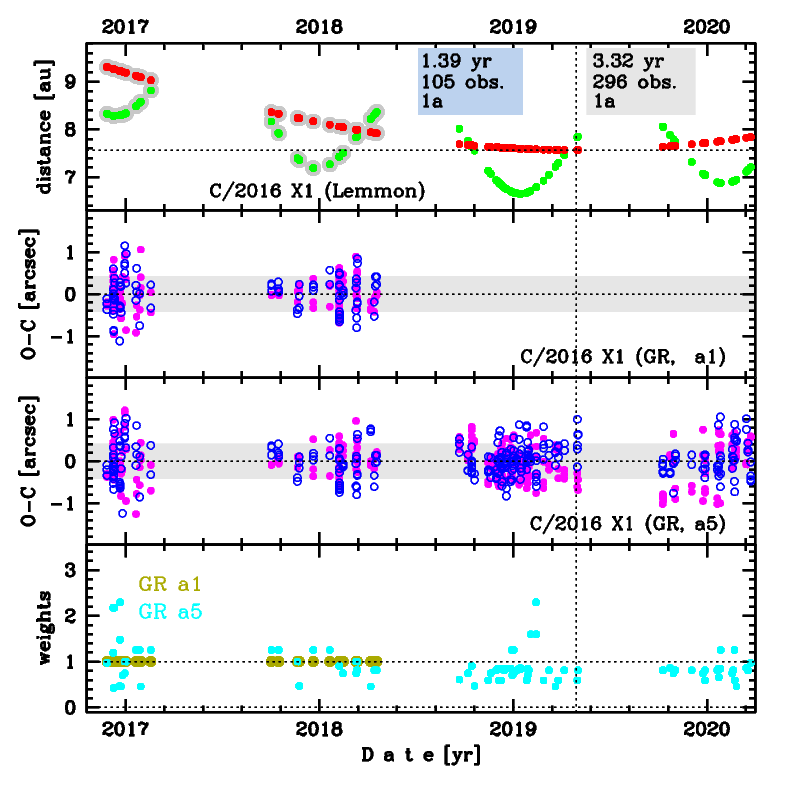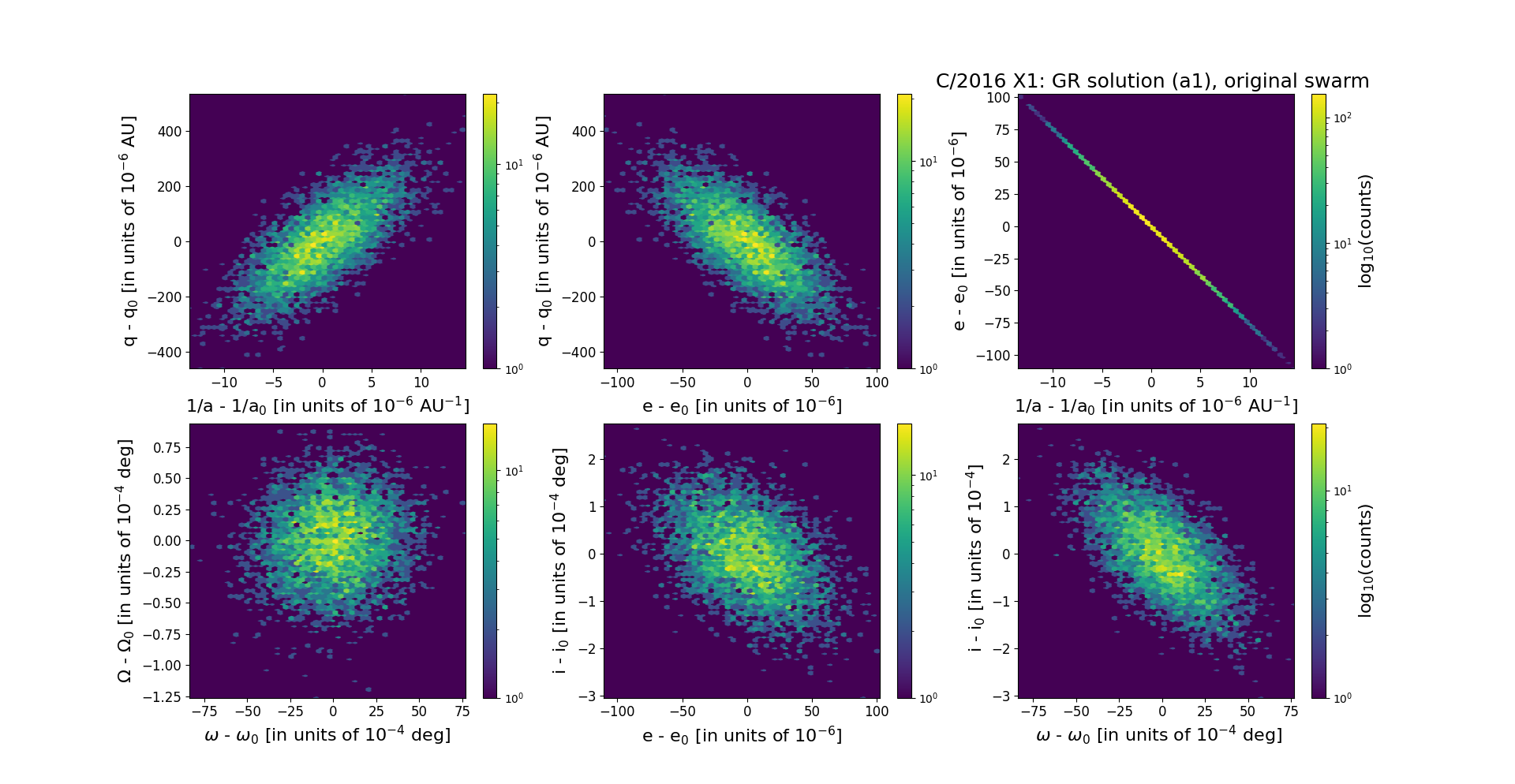C/2016 X1 Lemmon
more info
Comet C/2016 X1 was discovered on 8 December 2016 with the Mount Lemmon survey, that is about 2.3 yr before its perihelion passage. Some prediscovery images of this comet were found: taken on 26 November 2016 by Pan-STARRS 1 telescope (Haleakala). This comet was observed until 23 March 2020.
Comet had its closest approach to the Earth on 13 January 2019 (6.652 au), about 3.5 months before its perihelion passage.
GR solution given here is based on data spanning over 3.32 yr in a range of heliocentric distances: 9.30 au – 7.56 au (perihelion) – 7.84 au.
This comet suffers small planetary perturbations during its passage through the planetary system; this is a long-period comet with original and future semimajor axes of about 3,300 au and 2,000 au, respectively.
#********************************** update of 'Oort spike' comets 2016 - 2020, comet no 3; long-period comet
Comet had its closest approach to the Earth on 13 January 2019 (6.652 au), about 3.5 months before its perihelion passage.
GR solution given here is based on data spanning over 3.32 yr in a range of heliocentric distances: 9.30 au – 7.56 au (perihelion) – 7.84 au.
This comet suffers small planetary perturbations during its passage through the planetary system; this is a long-period comet with original and future semimajor axes of about 3,300 au and 2,000 au, respectively.
#********************************** update of 'Oort spike' comets 2016 - 2020, comet no 3; long-period comet
| solution description | ||
|---|---|---|
| number of observations | 105 | |
| data interval | 2016 11 26 – 2018 04 18 | |
| data arc selection | data generally limited to pre-perihelion (PRE) | |
| range of heliocentric distances | 9.3 au – 7.92au | |
| detectability of NG effects in the comet's motion | NG effects not determinable | |
| type of model of motion | GR - gravitational orbit | |
| data weighting | YES | |
| number of residuals | 192 | |
| RMS [arcseconds] | 0.42 | |
| orbit quality class | 1a | |
| orbital elements (barycentric ecliptic J2000) | ||
|---|---|---|
| Epoch | 1706 02 07 | |
| perihelion date | 2019 04 28.88444866 | ± 0.02175598 |
| perihelion distance [au] | 7.57133881 | ± 0.00012795 |
| eccentricity | 0.99770508 | ± 0.00003065 |
| argument of perihelion [°] | 224.498534 | ± 0.002112 |
| ascending node [°] | 256.423256 | ± 0.000029 |
| inclination [°] | 26.427658 | ± 0.000077 |
| reciprocal semi-major axis [10-6 au-1] | 303.11 | ± 4.05 |
| file containing 5001 VCs swarm |
|---|
| 2016x1a1.bmi |

Upper panel: Time distribution of positional observations with corresponding heliocentric (red curve) and geocentric (green curve) distance at which they were taken. The horizontal dotted line shows the perihelion distance for a given comet whereas vertical dotted line — the moment of perihelion passage.
Middle panel(s): O-C diagram for a given solution (sometimes in comparison to another solution available in CODE), where residuals in right ascension are shown using magenta dots and in declination by blue open circles.
Lowest panel: Relative weights for a given data set(s).
Middle panel(s): O-C diagram for a given solution (sometimes in comparison to another solution available in CODE), where residuals in right ascension are shown using magenta dots and in declination by blue open circles.
Lowest panel: Relative weights for a given data set(s).
